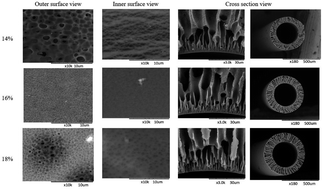Selectively mixed matrix hemodialysis membrane for adequate clearance of p-cresol by the incorporation of imprinted zeolite
Abstract
The adequacy in uremic toxin removal upon hemodialysis treatment is essential in patients with kidney failure diseases as poor removal leads to heart failure, hypertension, and stroke. The combination of adsorption and diffusion processes has become very advantageous for hemodialysis membranes. By this mechanism, water-soluble uremic toxins (WSUTs) and protein-bounded uremic toxins (PBUTs) could be removed at one time. Therefore, this study aimed to develop a novel imprinted zeolite by p-cresol (IZC) and then incorporated it into polyethersulfone (PES) and poly(vinyl pyrrolidone) (PVP) to produce hollow fiber mixed matrix membrane (HF-MMM). The IZC proved to be sensitive in attracting the adsorbate, classifying it as having a strong adsorption behavior. Accordingly, IZC is very promising to be applied as an adsorbent in the hemodialysis treatment. In this study, IZC as p-cresol's adsorbent was incorporated into a PES-based polymeric membrane with a small addition of PVP to produce HF-MMM using a dry/wet spinning process. The effect of air gap distance between the spinneret and coagulant bath and percentage loading for PES, PVP, and IZC were studied and optimized to obtain the best performance of HF-MMM. The 40 cm of air gap distance, 16 wt% of PES, 2 wt% of PVP, and 1 wt% of IZC loading were able to produce a superior hemodialysis membrane. These optimized parameters showed sufficient uremic toxin removal, i.e., 60.74% of urea, 52.35% of p-cresol in the phosphate buffer saline solution, and 66.29% of p-cresol in bovine serum albumin solution for 4 h permeation using the dialysis system. These HF-MMMs also achieved pure water flux of 67.57 L m−2 h−1 bar−1 and bovine serum albumin rejection of 95.05%. Therefore, this membrane has proven to be able to clean up WSUT and PBUT through a one-step process. Moreover, as compared to the neat PES membrane, MMM was able to remove p-cresol at 186.22 times higher capability.



 Please wait while we load your content...
Please wait while we load your content...